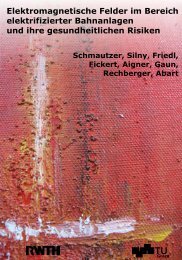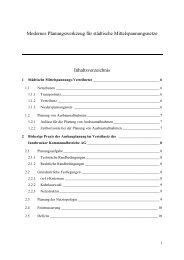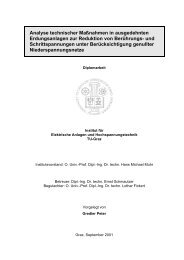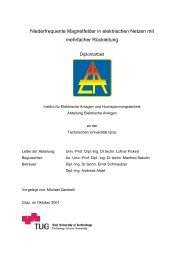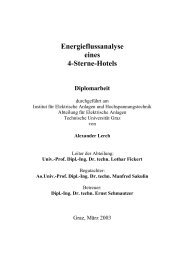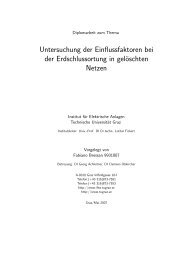Development of a wavelet-based algorithm to detect and determine ...
Development of a wavelet-based algorithm to detect and determine ...
Development of a wavelet-based algorithm to detect and determine ...
You also want an ePaper? Increase the reach of your titles
YUMPU automatically turns print PDFs into web optimized ePapers that Google loves.
6.2. BASIC IDEAS OF THE WAVELET TRANSFORM 49<br />
Figure 6.13: The dyadic lattice in the time-scale plane<br />
rithms that concern the convolution theorem. For example, it is considerably faster <strong>to</strong><br />
do the calculation in the frequency domain with the help <strong>of</strong> the Fourier transform: one<br />
can calculate the <strong>wavelet</strong> coefficients for a given scale at all sections simultaneously<br />
(step 2 <strong>and</strong> 3 at the same time) <strong>and</strong> efficiently.<br />
6.2.3 Discretization <strong>of</strong> Continuous Wavelet Transform<br />
As mentioned above, <strong>to</strong> carry out the continuous <strong>wavelet</strong> transform is a fair amount<br />
<strong>of</strong> work <strong>and</strong> it generates large amount <strong>of</strong> data. Therefore, the continuous <strong>wavelet</strong><br />
transform is primarily employed <strong>to</strong> derive properties <strong>and</strong> the discrete form is necessary<br />
for reducing redundancy <strong>and</strong> for most computer implementations.<br />
In general, the discrete forms <strong>of</strong> the continuous <strong>wavelet</strong> transforms are generated by<br />
the sampling from the corresponding continuous <strong>wavelet</strong> transform. For example, the<br />
scale is sampled by a = a j<br />
0, <strong>and</strong> the translation by b = nb0a j<br />
0, where a0 <strong>and</strong> b0 are the<br />
discrete scale <strong>and</strong> the translation step sizes respectively <strong>and</strong> j ∈ Z. If a0 = 2 <strong>and</strong> b0 = 1,<br />
then the scales <strong>and</strong> positions will be <strong>based</strong> on the power <strong>of</strong> two, i.e. a = 2 j <strong>and</strong> b = n2 j .<br />
The <strong>wavelet</strong> coefficients then correspond <strong>to</strong> the dyadic lattice points in the time-scale<br />
plane, as shown in Figure 6.13. This lattice can be indexed by two integers: j <strong>and</strong> n,<br />
where j corresponds <strong>to</strong> the discrete scale levels <strong>and</strong> n <strong>to</strong> the discrete translation steps.



